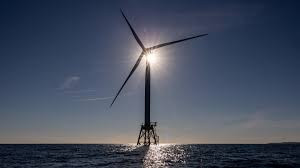views
The offshore wind energy market has gained significant momentum as a critical component of the global renewable energy transition. With the growing demand for clean and sustainable energy sources, offshore wind offers an abundant and reliable supply of power. This summary highlights key aspects of the market including its growth drivers, technological advancements, challenges, and future prospects, providing a comprehensive overview of the sector.

Market Growth and Drivers
The offshore wind energy market has experienced rapid growth in recent years, fueled by increasing investments and supportive government policies worldwide. Key drivers include the urgent need to reduce carbon emissions, rising energy demand, and advancements in turbine technology. Offshore wind farms benefit from higher and more consistent wind speeds compared to onshore sites, enabling greater energy production.
Expanding geographic reach is another major growth factor. While Europe remains a leader in offshore wind capacity, Asia and North America are rapidly developing new projects, with countries like China, Taiwan, the United States, and South Korea investing heavily.
Technological Innovations
Technological progress plays a vital role in expanding offshore wind capacity and reducing costs. The development of larger, more efficient turbines—some exceeding 15 MW capacity—has improved energy output and lowered the levelized cost of energy (LCOE).
Floating offshore wind technology, which allows turbines to be installed in deeper waters, is opening up new areas for development beyond the traditional shallow coastal zones. Additionally, digital tools such as AI-driven predictive maintenance and real-time monitoring enhance operational efficiency and asset lifespan.
Market Challenges
Despite its promising outlook, the offshore wind energy market faces several challenges. High capital expenditure is a significant barrier, with offshore projects requiring substantial upfront investment for turbine manufacturing, installation, and subsea infrastructure.
Technical difficulties related to harsh marine environments and complex grid integration also limit development. The distance of offshore farms from shore necessitates expensive subsea cables and grid upgrades to ensure efficient power transmission.
Regulatory hurdles, including lengthy permitting processes and inconsistent policies across regions, add uncertainty and delay project timelines. Environmental concerns regarding impacts on marine ecosystems and fisheries require careful management and can slow approvals.
Supply chain constraints, such as limited availability of specialized vessels and manufacturing capacity, alongside skilled labor shortages, further restrict rapid market expansion.
Competitive Landscape
The offshore wind energy market is highly competitive, with several global leaders across turbine manufacturing, project development, and construction services. Major turbine manufacturers such as Siemens Gamesa, Vestas, and GE Renewable Energy continuously innovate to enhance turbine efficiency and reliability.
Leading energy companies, including Ørsted, Equinor, and Iberdrola, dominate project development and operations. Strategic partnerships, joint ventures, and vertical integration are common approaches to mitigate risks and optimize project execution.
Environmental and Economic Impact
Offshore wind energy contributes significantly to reducing greenhouse gas emissions and combating climate change. By providing clean electricity at scale, it reduces reliance on fossil fuels and enhances energy security.
Economically, offshore wind projects stimulate job creation in manufacturing, construction, and maintenance. They also foster local supply chain development and drive investment in related infrastructure, supporting regional economic growth.
Future Outlook and Opportunities
The future of the offshore wind energy market is promising, with capacity expected to grow substantially over the next decade. Continued technological innovation, especially in floating wind and digital asset management, will enable expansion into new geographies and deeper waters.
Integration with other renewable technologies, such as solar and energy storage, as well as emerging applications like green hydrogen production, will create additional revenue streams and enhance system flexibility.
Policy support and international collaboration remain critical to overcoming existing challenges and accelerating deployment. As cost reductions continue, offshore wind is expected to become one of the most cost-competitive sources of large-scale renewable energy globally.
Conclusion
In summary, the offshore wind energy market stands as a vital pillar of the clean energy transition. Its abundant resource potential, coupled with technological advancements and expanding geographic reach, presents significant growth opportunities.
While challenges related to cost, technology, regulation, and supply chain exist, industry efforts and policy support are steadily addressing these barriers. The offshore wind sector is poised for robust expansion, playing a central role in achieving global sustainability and climate objectives in the coming decades.



Comments
0 comment